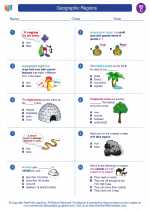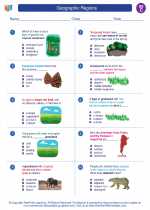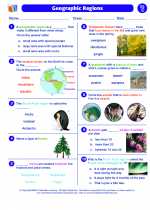Geographic Regions -> climate zones
Climate Zones
Climate zones are areas of the Earth that share similar weather patterns including temperature and precipitation. The Earth is divided into several climate zones based on factors such as latitude, altitude, and proximity to bodies of water. These climate zones affect the types of vegetation, animals, and human activities that can be found in each region.
Types of Climate Zones
There are several main types of climate zones, including:
- Tropical
- Desert
- Temperate
- Polar
Tropical Climate Zone
The tropical climate zone is located near the equator and is characterized by warm temperatures and high humidity. This climate zone is home to lush rainforests and diverse wildlife.
Desert Climate Zone
The desert climate zone is typically found at around 30 degrees latitude and is characterized by low precipitation and high temperatures. Vegetation in this climate zone is adapted to arid conditions, and includes cacti and other succulent plants.
Temperate Climate Zone
The temperate climate zone is located between the tropical and polar zones and experiences distinct seasons. This climate zone is home to a variety of vegetation types, including deciduous and coniferous forests, as well as grasslands.
Polar Climate Zone
The polar climate zone is located near the North and South Poles and is characterized by cold temperatures and little precipitation. Vegetation in this climate zone is limited, and primarily consists of mosses, lichens, and other cold-tolerant plants.
Study Guide
- What are climate zones?
- List the main types of climate zones.
- Describe the characteristics of the tropical climate zone.
- Where is the desert climate zone typically found?
- What are some examples of vegetation in the temperate climate zone?
- What type of vegetation is found in the polar climate zone?
Understanding climate zones is important for understanding how different regions of the world are impacted by weather patterns and for predicting the types of natural resources and ecosystems that can be found in each area.
[Climate Zones] Related Worksheets and Study Guides:
.◂Social Studies Worksheets and Study Guides Third Grade. Geographic Regions

 Worksheet/Answer key
Worksheet/Answer key
 Worksheet/Answer key
Worksheet/Answer key
 Worksheet/Answer key
Worksheet/Answer key
 Worksheet/Answer key
Worksheet/Answer key
